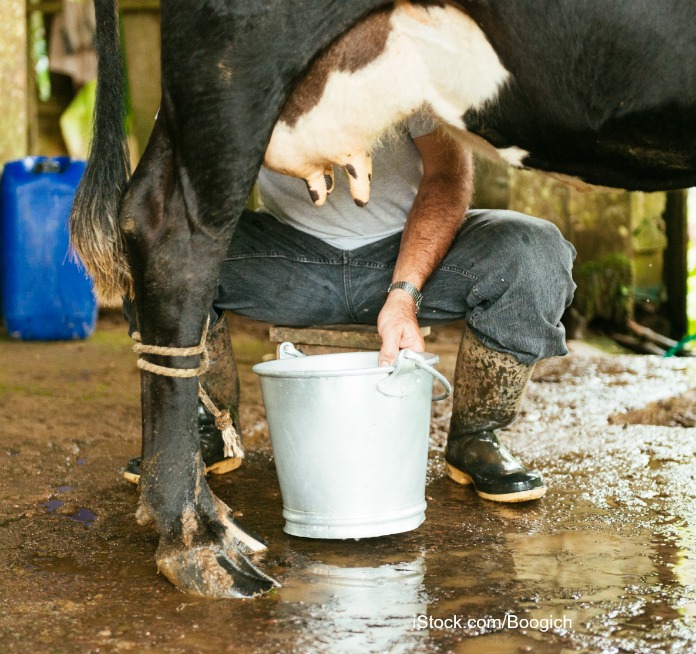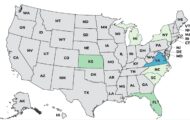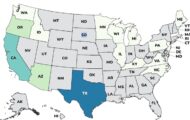An E. coli outbreak associated with raw milk that occurred in March 2016 was announced at the Virginia Department of Health Field Epidemiology Seminar, held on June 2, 2017 in Fredericksburg, Virginia. Daniel Ferrell, MPH, District Epidemiologist for the Rappahannock-Rapidan Health district presented the information.

In March 2016, a doctor notified the Virginia Department of Health of four hospitalized patients who were diagnosed with Shiga toxin-producing E. coli (STEC) infections. Two of those patients developed hemolytic uremic syndrome (HUS). All of the patients consumed raw milk from a farm in the Rappahannock-Rapidan Health District as part of a herd-share program.
Officials continued to receive more report of patients with STEC infections or HUS who had also consumed raw milk from the farm. The farm was not named in the report.
And officials did not tell the public about this outbreak, although on March 21, 2016, while the outbreak was going on, the Virginia Department of Health blog stated, “There are tons of ways to go about living a healthier lifestyle. Incorporating nutritious, healthy foods is a step towards achieving this lifestyle for you and your family. With that, you may have been thinking of incorporating raw or unpasteurized milk into your diet. We are happy you are here and doing your research! There is much conflict over the “raw milk revolution” and at VDH we want to assist the people of Virginia in maintaining a healthy lifestyle with a minimal amount of risk to their well-being. Our goal is to keep the risk of contamination in milk low to ensure the people of the Commonwealth are safely drinking one of the most popular beverages nature offers.”
The Department does have a page dedicated to Pasteurization, which states, “Pasteurization kills harmful microbes in milk without affecting the taste or nutritional value,” and, “Prior to pasteurization, milk was a common source of the bacteria that cause tuberculosis, Q fever, diphtheria, severe streptococcal infections, typhoid fever, and other foodborne illnesses. The incidence of disease outbreaks associated with milk has fallen dramatically since pasteurization of milk became widespread.” The blog ends with this statement, “Drinking ONLY pasteurized milk from an approved source is the only way of ensuring the safety of your milk and protecting you and your family.”
To investigate the outbreak, communicable disease staff interviewed the patients using standardized forms. And officials from the Rappahannock-Rapidan Health District, the Virginia Department of Health, and the Virginia Department of Agriculture and Consumer Services visited the farm and inspected it and took samples. In addition, one ill person submitted leftover raw milk for testing at the Division of Consolidated Laboratory Services. Milk specimens were tested by Enzyme Linked Fluroescent Assay for STEC O157 and by culture and pulsed-field gel electrophoresis.
The common exposure among the patients was consuming raw milk from the farm. STEC was not isolated from any milk or environmental specimens collected at the farm. Non-O157 STEC from a private household’s raw milk was indistinguishable, by PFGE, from another ill person’s isolates.
Based on epidemiological and lab evidence, this outbreak was associated with raw milk consumption. The facility owners were educated about preventing equipment contamination, sanitation techniques, and the dangers associated with producing unpasteurized milk. The report 3ends by stating, “STEC outbreaks related to the consumption of raw milk can be prevented through the pasteurization of milk and milk products.”
The symptoms of an E. coli infection include severe abdominal and stomach pain and cramps, diarrhea that is usually bloody or watery, and a mild fever. Symptoms usually begin a few days after exposure to the pathogenic bacteria. Most people do require medical care when they contract this type of infection.
If the patient is under the age of 5, or if antibiotics are incorrectly prescribed, a complication called hemolytic uremic syndrome, a type of kidney failure, can develop. The symptoms of HUS include little or no urine output, a skin rash, easy bruising, pale skin, bleeding from the nose or mouth, and lethargy. Anyone experiencing these symptoms needs to see a doctor immediately, since HUS can cause kidney failure, strokes, seizures, and death.
Pritzker Hageman law firm represents and helps people who have been sickened by contaminated food such as some raw milk products. We get compensation for those who have been injured, and justice through our work. Our lawyers represent families of children sickened with bacterial infections in personal injury and wrongful death lawsuits against farms, retailers, grocery stores, food processors, restaurants, daycare centers, schools, and others. Attorney Fred Pritzker and his experienced team recently won $7.5 million for young client whose kidneys failed because of hemolytic uremic syndrome after an E. coli O157:H7 infection. Please note that class action lawsuits are usually not appropriate for outbreak victims because these cases are very unique.




